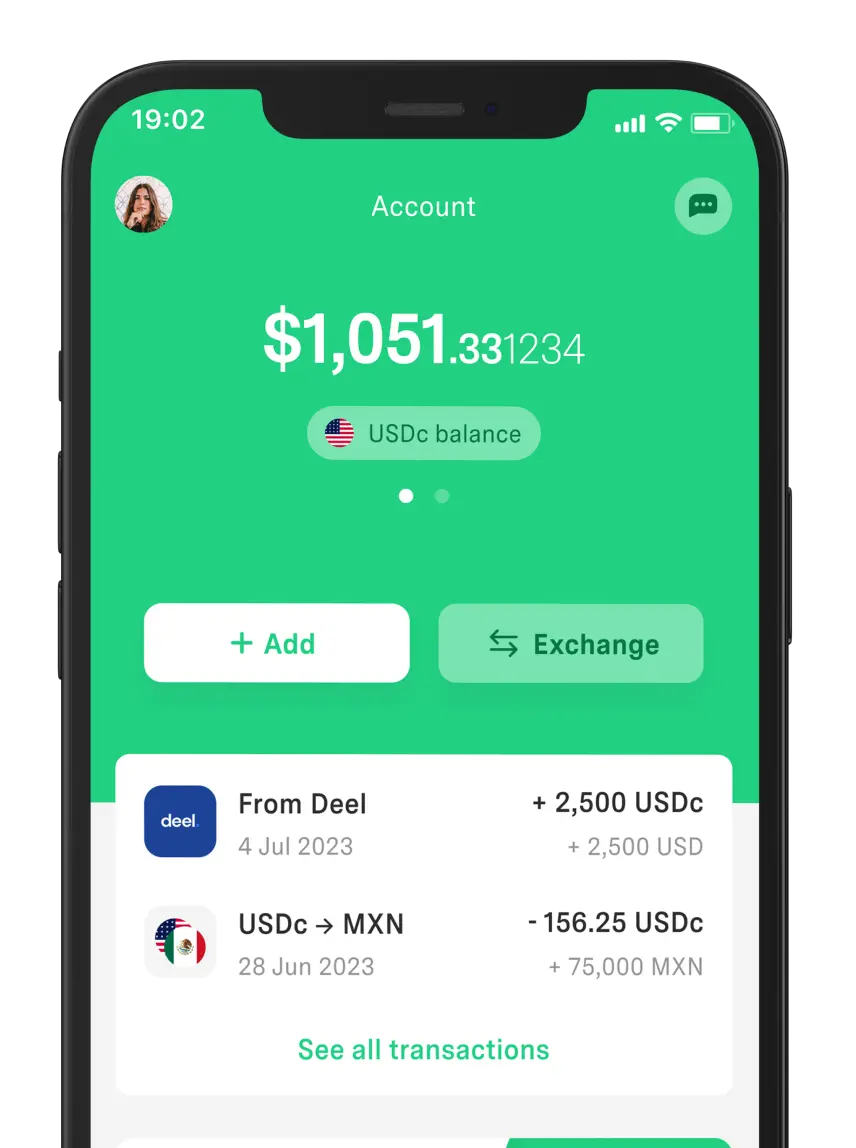 Your Money
Your Money What Are Personal Finance and How to Manage It
Your personal finances summarize your relationship with money. Discover why they matter and what to do to start managing them well.



Asia comprises 49 recognized countries and is the largest and most populated continent in the world. It is also considered one of the key drivers of the global economy, with unmatched diversity.
That’s why Asian currencies play a crucial role in international trade. From the most consolidated, such as the Chinese yuan and Japanese yen, to emerging ones like the Indian rupee.
But which ones are truly relevant? Find out below.
Although Asia does not hold the world’s most expensive currency, many of its currencies have a decisive weight in the global economy. They strongly influence international trade, export prices, and investment decisions.
Here is a top 10 list of the most important Asian currencies and their influence beyond the continent:
The yuan, also known as the renminbi, is one of the world’s strongest currencies. It is the official currency of China, the second-largest economy on the planet.
Its prominence has increased since China joined the OMC in 2001, gaining relevance in international trade—especially in the manufacturing industry, where China leads globally.
The yuan is also part of the International Monetary Fund’s Special Drawing Rights basket, reinforcing its status in financial markets.
Exchange rate today: 1 CNY = 0.14 USD.
The yen is Japan’s official currency, a country known for its leadership in innovation and technology. That’s why its currency remains strong and reliable, even in times of global uncertainty.
It is also a reserve currency and a symbol of financial stability for a country essential to the world economy. Additionally, it is the third most traded currency in international markets.
Interesting fact: Its highest denomination bill, the 10,000 yen note, features the portrait of prominent Japanese thinker Yukichi Fukuzawa.
Exchange rate today: 1 JPY = 0.006 USD.
The rupee is the currency of one of the world’s major emerging powers—India. Its name comes from the Sanskrit word rupya, meaning “wrought silver,” with a history dating back to the 16th century.
As the currency of the fifth-largest economy by nominal value, the rupee reflects both the country’s economic dynamism and demographic weight.
It also plays a key role in South Asian trade and has gained importance thanks to India’s agreements with other nations aiming to diversify trade beyond the dollar.
Exchange rate today: 1 INR = 0.01 USD.
After World War II, the won replaced the old Korean yen. Today, it reflects a highly export-oriented economy with significant weight in global trade.
The won represents South Korea’s economic strength—a country leading in technology, innovation, and industrial production.
Its stability and moderate volatility against the dollar position it as a reliable currency in international markets. That’s why it continues to grow in trade alongside the prominence of major South Korean brands.
Exchange rate today: 1 KRW = 0.0007 USD.
Indonesia is the fourth most populous country in the world and holds the largest economy in Southeast Asia, according to an IMF report.
Its currency, the Indonesian rupiah, was introduced in 1946 and has undergone various phases of volatility due to the country’s political and economic changes.
Despite that, its role has strengthened thanks to Indonesia’s growing weight in international markets. Additionally, its rich reserves of oil, gas, coal, and minerals keep the rupiah relevant in global commodity trade.
Exchange rate today: 1 IDR = 0.00006 USD.
The Singapore dollar, in addition to being one of the most stable currencies in Southeast Asia, is also one of the most respected. It was introduced in 1967 after separating from Malaysia and is regulated by the Monetary Authority of Singapore, which enforces a strict and transparent monetary policy.
It has also been established as a reserve currency in several countries. Being the currency of a nation with a strong economy and strategic location, it plays a key role in international trade and finance.
Exchange rate today: 1 SGD = 0.76 USD.
Hong Kong stands as one of the world’s most important financial hubs and a key pillar of the Asian economy. In fact, its currency is pegged to the U.S. dollar, which ensures stability in a volatile global environment.
This peg has made the currency essential for global financial transactions. As a result, it is widely used in regional investments and in operations related to the U.S. dollar, the U.S. currency.
It is also the ninth most traded currency.
Exchange rate today: 1 HKD = 0.12 USD.
The official currency of Saudi Arabia—an economy deeply tied to the global energy market—is the Saudi riyal. It has been managed by the Saudi Central Bank since 1925.
Saudi Arabia uses its currency as a strategic tool in international crude oil transactions, being a key member of OPEC and one of the largest oil producers in the world.
It’s worth noting that the riyal’s stability is also linked to its peg to the U.S. dollar.
Exchange rate today: 1 SAR = 0.26 USD.
This is one of the most stable currencies in the Gulf region, widely used in regional trade and international operations.
The dirham, used in the United Arab Emirates, has been pegged to the U.S. dollar since 1997. This has allowed the country to maintain a predictable and controlled monetary policy.
Furthermore, the Emirati economy relies on oil, along with diversification into tourism, finance, and aviation. This economic strength supports the dirham as a reliable currency for investors in the Middle East.
Exchange rate today: 1 AED = 0.27 USD.
Taiwan enjoys a highly specialized economy focused on technology and advanced manufacturing. It leads in semiconductor production, electronic components, and high-precision goods. It is also a critical link in global supply chains.
All these factors have been crucial to the strength of its currency, which is becoming increasingly relevant in international tech trade.
Exchange rate today: 1 TWD = 0.03 USD.
To check the current value, visit the official sources. Exchange rates as of April 30, 2025.
Table of the 10 Most Important Asian Currencies and Their Global Relevance:
Currency | Country/Region | Global Relevance | Special Status (if applicable) |
Chinese Yuan (CNY) | China | Reserve currency, global trade | Part of IMF SDR basket |
Japanese Yen (JPY) | Japan | Third most traded, safe haven | Reserve currency |
Indian Rupee (INR) | India | Regional trade, large economy | - |
South Korean Won (KRW) | South Korea | Technology, international trade | - |
Indonesian Rupiah (IDR) | Indonesia | Commodities, regional economy | - |
Singapore Dollar (SGD) | Singapore | Financial center, stability | Fitch AAA rating |
Hong Kong Dollar (HKD) | Hong Kong | Ninth most traded, global finance | Pegged to USD |
Saudi Riyal (SAR) | Saudi Arabia | Oil trade, stability | Pegged to USD |
UAE Dirham (AED) | United Arab Emirates | Energy trade, stability | Pegged to USD |
New Taiwan Dollar (TWD) | Taiwan | Technology, supply chains | - |
Country | ISO Code | Currency |
Afghanistan | AFN | Afghan Afghani |
Saudi Arabia | SAR | Saudi Riyal |
Armenia | AMD | Armenian Dram |
Azerbaijan | AZN | Azerbaijani Manat |
Bangladesh | BDT | Bangladeshi Taka |
Bahrain | BHD | Bahraini Dinar |
Myanmar (Burma) | MMK | Burmese Kyat |
Brunei | BND | Brunei Dollar |
Bhutan | BTN | Bhutanese Ngultrum |
Cambodia | KHR | Cambodian Riel |
Qatar | QAR | Qatari Riyal |
China | CNY | Chinese Yuan (Renminbi) |
Cyprus (Greek part) | EUR | Euro |
Cyprus (Turkish part) | TRY | Turkish Lira |
North Korea | KPW | North Korean Won |
South Korea | KRW | South Korean Won |
United Arab Emirates | AED | UAE Dirham |
Philippines | PHP | Philippine Peso |
Georgia | GEL | Georgian Lari |
India | INR | Indian Rupee |
Indonesia | IDR | Indonesian Rupiah |
Iraq | IQD | Iraqi Dinar |
Iran | IRR | Iranian Rial |
Israel | ILS | Israeli New Shekel |
Japan | JPY | Japanese Yen |
Jordan | JOD | Jordanian Dinar |
Kazakhstan | KZT | Kazakhstani Tenge |
Kyrgyzstan | KGS | Kyrgyzstani Som |
Kuwait | KWD | Kuwaiti Dinar |
Laos | LAK | Lao Kip |
Lebanon | LBP | Lebanese Pound |
Malaysia | MYR | Malaysian Ringgit |
Maldives | MVR | Maldivian Rufiyaa |
Mongolia | MNT | Mongolian Tugrik |
Nepal | NPR | Nepalese Rupee |
Oman | OMR | Omani Rial |
Pakistan | PKR | Pakistani Rupee |
Russia | RUB | Russian Ruble |
Singapore | SGD | Singapore Dollar |
Syria | SYP | Syrian Pound |
Sri Lanka | LKR | Sri Lankan Rupee |
Thailand | THB | Thai Baht |
Tajikistan | TJS | Tajikistani Somoni |
Timor-Leste | USD | United States Dollar |
Turkmenistan | TMT | Turkmenistani Manat |
Turkey | TRY | Turkish Lira |
Uzbekistan | UZS | Uzbekistani Som |
Vietnam | VND | Vietnamese Dong |
Yemen | YER | Yemeni Rial |
The yuan is gaining ground against Latin American currencies in certain international transactions. This is part of China’s strategy to strengthen its currency and reduce dependence on the U.S. dollar.}
Brazil and Argentina, for instance, have signed agreements with China to conduct bilateral transactions directly in yuan.
In Brazil, the yuan has already surpassed the euro as the second most used reserve currency. Meanwhile, in Argentina, it is used to preserve U.S. dollar reserves. Even Bolivia has incorporated the yuan into its commercial transactions.
Chile, Peru, Costa Rica, Ecuador, and Nicaragua are other countries that have joined free trade agreements with China. In addition, yuan clearing banks have been established in countries such as Chile, Brazil, and Argentina.
China’s strategy to promote yuan usage in Latin America has been in motion for the past decade. But it’s in the last two years that major progress has been seen, further solidifying its presence.
If you're looking for a safe and practical way to preserve your money’s value, you might consider digital alternatives.
One of them is DolarApp, available in Argentina, Mexico, Brazil, and Colombia to buy or sell USDc at a favorable exchange rate.
The best part? Activating a digital dollar account is quick and easy. Once opened, you can send and receive money in USDc with a standard commission of 3 USDc per transaction.
Download DolarApp and enjoy the benefits today!

Los países tienen fronteras. Tus finanzas, ya no.
 Your Money
Your Money Your personal finances summarize your relationship with money. Discover why they matter and what to do to start managing them well.

 Your Money
Your Money European currencies go beyond the euro, as not all countries use it. Here’s the complete list of currencies by country.

 Your Money
Your Money In this post, we'll teach you how to convert your gross salary to net salary in Mexico so you know how much you really earn from your work.


